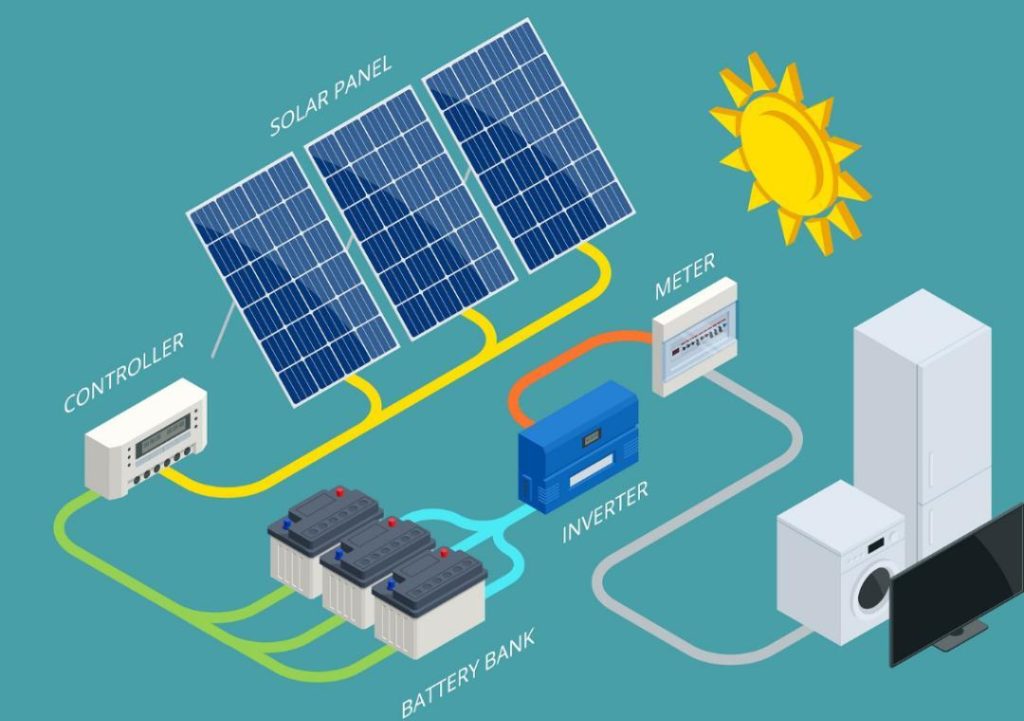
How Does a Solar Power Grid Really Work?
As the world continues to transition towards renewable energy sources, solar power has become a crucial part of the global energy mix. With the ability to generate electricity from sunlight, solar power offers a clean, sustainable, and reliable source of energy. But have you ever wondered how a solar power grid really works?
In this blog post, we’ll take a closer look at the multi-step process that solar power enters the grid, and how it operates alongside traditional energy sources.
Step 1: Solar Panels Generate DC Electricity
The first step in the solar power process is to generate DC (direct current) electricity using solar panels. These panels are made up of photovoltaic (PV) cells that convert sunlight into electrical energy. The DC electricity is generated when sunlight hits the PV cells, causing electrons to flow through the material and create an electrical current.
Step 2: Inverters Convert DC to AC
The DC electricity generated by the solar panels needs to be converted into AC (alternating current) electricity, which is the type of electricity used by homes and businesses. This is where inverters come in. Inverters are specialized devices that convert the DC electricity into AC electricity, making it usable by the grid.
Step 3: Connecting to the Grid
Once the solar power has been converted into AC electricity, it’s ready to be fed into the grid. This is typically done through a process called net metering, where the excess energy generated by the solar panels is sent back to the utility grid in exchange for credits. These credits can be used to offset the cost of energy consumed by the homeowner or business.
Step 4: Excess Energy Flows into the Utility Network
When the solar power system generates more electricity than is being used by the homeowner or business, the excess energy flows into the utility network. This excess energy can be used to power other homes or businesses, or it can be stored in energy storage systems like batteries.
Step 5: Energy Storage Helps Balance Supply and Demand
As the demand for energy fluctuates throughout the day, energy storage systems like batteries play a crucial role in balancing supply and demand. When the grid is experiencing peak demand, energy storage systems can release stored energy into the grid, helping to stabilize the supply and demand balance.
How Solar Power Operates Alongside Traditional Energy Sources
Solar power is not a replacement for traditional energy sources, but rather a complementary source of energy. In fact, solar power can operate alongside traditional energy sources like fossil fuels, hydroelectric power, and nuclear power. This is because solar power generation is intermittent, meaning that it’s only available during the day when the sun is shining.
Benefits of Solar Power
So why is solar power becoming an increasingly important part of the global energy mix? For starters, solar power is a clean source of energy, producing zero greenhouse gas emissions or air pollution. It’s also a renewable source of energy, meaning that it’s sustainable and won’t run out anytime soon.
Additionally, solar power can help reduce energy costs for homeowners and businesses. With net metering, excess energy generated by solar panels can be sent back to the grid, reducing the amount of energy that needs to be purchased from the utility company. This can lead to significant savings on energy bills over time.
Conclusion
In conclusion, solar power enters the grid through a multi-step process that involves generating DC electricity from sunlight, converting it into AC electricity using inverters, and connecting it to the grid. Excess energy flows into the utility network, where it can be used to power other homes or businesses, or stored in energy storage systems like batteries. Solar power can operate alongside traditional energy sources, offering a clean, sustainable, and reliable source of energy. With the benefits of solar power becoming increasingly clear, it’s no wonder that it’s becoming an increasingly important part of the global energy mix.
News Source:
https://www.growthjockey.com/blogs/solar-energy-how-it-works






